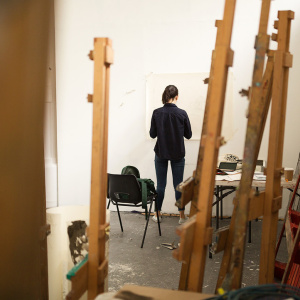Summer Short Courses
General Information
Applicants
Short Courses are open to anyone aged seventeen and over.
Students under the age of 18
Slade Short Courses are designed for adults and the students attending our courses usually span a wide range of ages. For those students interested in attending a short course who are below the age of 18 (17+), we ask you to provide the following documents in addition to the application form so that we may consider you:
- A letter from the Headteacher, Deputy Headteacher, Head of Year or art teacher at your school stating your suitability for the course
and - A letter from your parent or guardian confirming that personal liability and contents insurance has been set up for you.
Booking and payment
To book a place, please go to the UCL Online Store by following the links to the UCL Shop above.
Course fee
The course fee covers tuition. The course fee does not include materials (unless stated otherwise), you must supply all materials yourself.
Refunds and cancellations
Cancellations are permitted up to one month before the start of a course, subject to a £25 cancellation fee. Refunds will not be made for cancellations less than one calendar month before the start of a course. Students who do not attend due to illness, personal or professional commitments do not have the right to a refund. For this reason we recommend that students take out personal insurance against any unforeseeable circumstances before the start of their course.
Before you start
Further course details and a materials list will be sent to you before the course begins.
Location
Short Courses will take place at the Slade School of Fine Art, UCL, Gower Street, London WC1E 6BT. Details will be confirmed upon receipt of payment.
Access
If you have any specific access needs, we will need to know about your access requirements in advance. Please tell us about your needs in confidence by emailing slade.summer@ucl.ac.uk.
Safety
Short Course students are required to sign a Safety Compliance Form as part of UCL Health and Safety regulations.
Further information
Please contact the Slade by emailingslade.summer@ucl.ac.uk.
Disclaimer
The information given above is accurate at the time of publication. However, the Slade School of Fine Art reserves the right to cancel or amend courses if circumstances require it.
-
Short Courses & Summer School
We will soon be announcing our Summer School short course programme, which offers a variety of courses for all levels of experience. Many students create an extended programme of study and choose multiple courses to advance their skills and interests....
